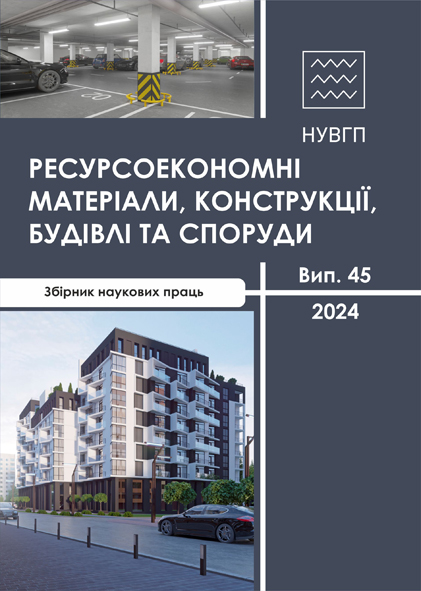EXPERIMENTAL RESEARCH OF PRE-TENSIONED COMBINED REINFORCED SOLID WOOD BEAMS
DOI:
https://doi.org/10.31713/budres.v0i45.11Abstract
Wood is the most environmentally friendly material used in construction as bending elements. As a result of the low stiffness of wooden elements that were subjected to direct and oblique transverse bending, researchers from different countries have made a lot of efforts to improve such structures by passive reinforcement with steel or composite polymer rod reinforcement or with the help of polymer tapes, nets, etc. Obtaining complete diagrams of wood deformation made it possible to develop methodological principles for modeling the work of wooden, both unreinforced and reinforced bending elements, including those with passive or pre-stressed combined reinforcement.
In the laboratory of the Department of Industrial and Civil Engineering of the National University of Water Management and Nature Management, a prestressed bending element with combined reinforcement of SBR (Prst) solid wood beams was manufactured for the first time.
The conducted pre-stressing of the investigated beams with combined SBR(Prst) reinforcement was carried out by bending by applying external forces. For beams made of solid wood SBR30(Prst) and SRB45(Prst), the prestress level was set from the limit moment that the cross section of the beam under study can take without reinforcement. After carrying out all the work on creating prestress in the solid wood element with combined reinforcement and after complete crystallization of the adhesive solutions, an experimental test of prestressed beams SBR30(Prst) and SBR45(Prst) was carried out. The calculation scheme of the beam is a beam lying freely on two supports and loaded by two concentrated forces. Destruction of a beam made of solid SBR30(Prst) wood due to chipping of a part of the wood together with the reinforcement. The destruction of the second beam took place by chipping the wood along the grain. This indicates that the influence of tangential stresses in prestressed combined reinforced beams made of solid wood is extremely large, and therefore, it is necessary to further develop a methodology and establish reinforcement of inclined sections of such elements. A statistical analysis of the convergence of theoretical and experimental curvature data depending on the applied load in the estimated most stressed cross-section of the prestressed combined reinforced beam SBR30(Prst) and SBR45(Prst), as well as the convergence of deflections, was carried out. It was established that the determination of the theoretical deflection and curvature by means of modeling allows to determine their values with high accuracy.

